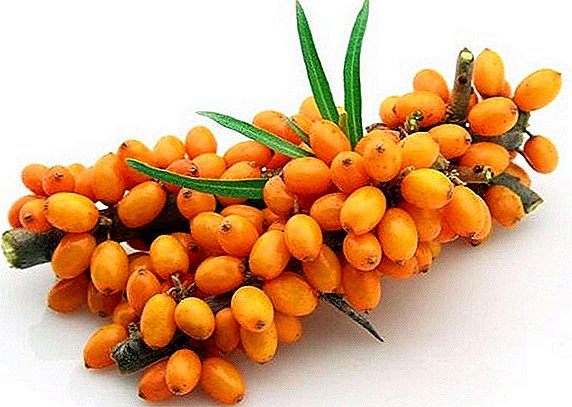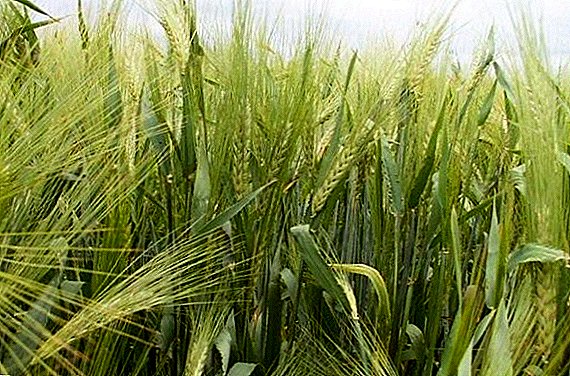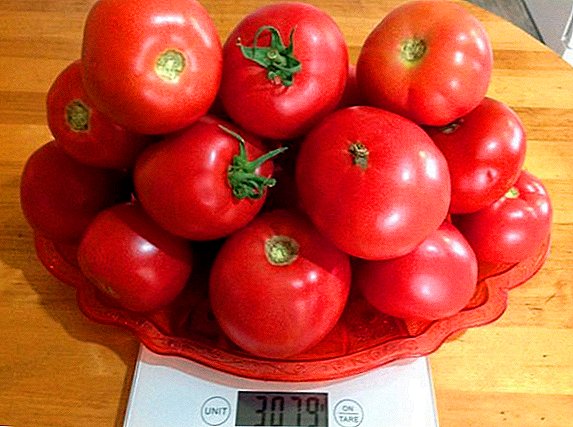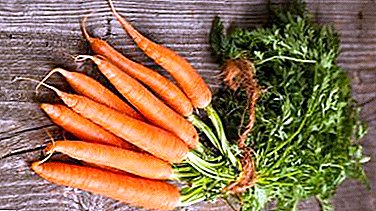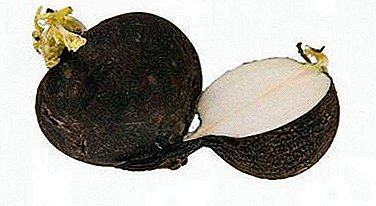
Radish is an extremely useful and undeservedly forgotten root vegetable. It is very rich in vitamins and microelements - 100 grams of vegetable contains more than 30% of the daily requirement of vitamin C and 14% of the norm of potassium, therefore, it is highly recommended to use radish with spring avitaminosis, increased pressure, and nervous excitability.
The vegetable contains vitamins of group B, vitamin E, K, useful sugars and phytoncides that protect the body from viruses. But even with so many nutrients in the root, it should be used carefully, and for some people it is completely forbidden to eat radish.
Why can root vegetables have contraindications?
Radish has a very pronounced islet-bitter taste and a special crunchy texture. Pepper vegetable taste is determined by its glucosinolates containing sulfur, nitrogen and glucose. Also in the radish contains the enzyme myrozin, which is in the composition of radish and mustard.
When combined, these two enzymes form allyl mustard oil, which is considered toxic when used too much. And oil, and special enzymes in the root can irritate the mucous membrane, aggravate chronic diseases of the gastrointestinal tract, some varieties of radish cause severe allergies.
When and to whom?
Allowed
Without fear, radish in moderation can be eaten by healthy adults and children over 12 years old. Medicinal potions and decoctions of vegetables can be given to children from the age of 8, provided that there are no allergic reactions.
Root crop is very specific in taste, so it is recommended to mix it in vegetable salads with cabbage, radish, cucumbers. The maximum amount of daily allowance of a vegetable for a healthy person is 200 grams.
 In folk recipes, the root vegetable, especially in combination with honey, is used in the treatment of:
In folk recipes, the root vegetable, especially in combination with honey, is used in the treatment of:
- gallstone disease;
- bronchitis;
- chronic constipation.
Radish juice:
- cleans the blood of toxins;
- improves liver function;
- copes well in complex therapy with jaundice, as it removes bilirubin from the body;
- and prevents the destruction of red blood cells.
For acute urinary tract infections, it is also recommended to use radish juice. Due to the presence of phytoncides, it contributes to the suppression of the growth of viruses and bacteria, thereby accelerating recovery.
With all these diseases, as well as In vegetable diets for weight loss, radish can be consumed in moderation almost daily.
Can not
It is not recommended to use radish for the following diseases:
- gastritis;
- stomach ulcer;
- duodenal ulcer;
- tendency to diarrhea.
The enzymes in the composition of the vegetable, giving it a sharp and bitter taste, are very irritating to the inflamed intestines and can exacerbate the course of the disease. Fiber in the composition of the root is very difficult to digest even a healthy body.
For any diseases of the gastrointestinal tract the use of radish is not recommended. In severe kidney disease, a bitter vegetable should also be excluded from the diet.
With restrictions
Very carefully, in small portions, you can use a sharp vegetable for children from 8 to 12 years old, pregnant and lactating women, people with diseases of the heart and blood vessels.
The benefits and harms of eating root vegetables
With diabetes mellitus (type 1 and 2)
 Many wonder whether it is possible to eat a root vegetable with type 1 and type 2 diabetes or not. Glycemic index of radish - only 12 units. The content of the vegetable in the diet is highly recommended for people with diabetes, both the first and second type.
Many wonder whether it is possible to eat a root vegetable with type 1 and type 2 diabetes or not. Glycemic index of radish - only 12 units. The content of the vegetable in the diet is highly recommended for people with diabetes, both the first and second type.
Root crop speeds up the metabolism, helps if you want to lose weight, contributes to the slow flow of glucose into the blood. In combination with other vegetables gives a long feeling of satiety, reduces the glycemic index of the rest of the food that enters the body along with the radish. Regular consumption of root vegetables helps people with diabetes:
- to clear the circulatory system of toxins that are daily ingested by the patient along with medications;
- free blood vessels from cholesterol plaques;
- due to the iron contained in the radish, to increase hemoglobin;
- reduce puffiness;
- gently stabilize blood pressure;
- strengthen medicament-reduced immunity.
With diabetes, the root can be eaten raw, in combination with other fresh vegetables (cucumbers, carrots, young cabbage, radishes, green salad). It is necessary to limit the use of vegetables 100 grams per day and not to add to the diet more than twice a week. You should consult with your doctor beforehand to rule out gastrointestinal diseases.
During pregnancy
Radish during pregnancy has a very positive effect on the body of both mother and baby, as it saturates the body:
- vitamins C and group B;
- potassium;
- iron;
- calcium;
- glucose.
Radish helps to speed up the metabolism and does not allow the expectant mother to gain excess weight.
It is contraindicated in pregnancy, if a woman has a uterus tone, as the essential oils contained in the root vegetable have the ability to strengthen it. Also, do not eat a root vegetable, if the expectant mother has a tendency to increased gas formation or diarrhea.
In all other cases, regular, two to three times a week, eating 100-150 grams of radish in vegetable salads will only benefit the expectant mother.
Gout
 If a gastrointestinal tract disease is not diagnosed in a patient with gout, radish is not only allowed to be consumed, but also highly recommended. Vegetable has the properties to remove excess salt from the body, the juice from the root perfectly copes with edema.
If a gastrointestinal tract disease is not diagnosed in a patient with gout, radish is not only allowed to be consumed, but also highly recommended. Vegetable has the properties to remove excess salt from the body, the juice from the root perfectly copes with edema.
- Introduction to the diet of salad of spicy vegetables is very useful, as the inflammatory processes in the patient's body will gradually fade. Radish will improve immunity, promote healing of wounds.
- For the treatment of gout, it is recommended to mix freshly squeezed vegetable garden juice with honey (2 tablespoons of juice for 1 teaspoon of honey) and take it in the morning during breakfast, after consulting with your doctor.
- For external treatment, it is extremely useful to apply a grated root to diseased joints, as well as rub them with fresh juice with honey. Radish pulls salt out of the body, so these compresses greatly facilitate the patient's condition.
When gastritis
In gastritis, as well as any diseases of the gastrointestinal tract, the use of spicy vegetables is prohibited. Radish contains too rough fiber, which even a healthy body can hardly digest. The phytoncides contained in the root vegetable and allyl mustard oil can aggravate the course of the disease, since they act on the mucous membrane extremely irritatingly.
Breastfeeding
Radish in the first months of HB is not recommended, because its bitter-spicy taste changes the taste of milk, and the baby can refuse to breast. A large amount of hardly digestible fiber in a vegetable can provoke colic and diarrhea in a baby. In addition, the root often causes allergies.
In this way, radish is a very useful root crop that contains many vitamins, potassium, calcium, iron and a large amount of coarse fiber that helps cleanse the body. For a healthy person, its use is highly recommended. But precisely because of the fiber and acute oils in certain diseases, in particular the gastrointestinal tract, it is necessary to exclude it from the diet completely or first be sure to consult with your doctor.




